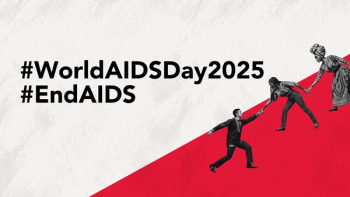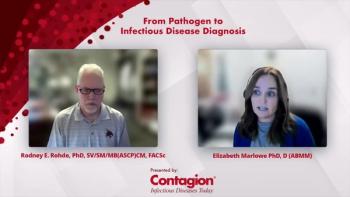
- April 2019
- Volume 4
- Issue 2
PrEP Retention in Care—It Takes a Village
Incorporating clinical pharmacists and stewardship program oversights into PrEP models may improve the rate of retention in care.
As the adoption of pre-exposure prophylaxis (PrEP) for HIV prevention expands across the nation, retention in care (RIC) is a critical step in ensuring the efficacy of PrEP. Multiple sites have attempted to identify specific barriers and obstacles that disrupt the continuum of PrEP care for patients and providers.
A study examining PrEP programs at community health centers in Rhode Island, Mississippi, and Missouri found that among 171 patients prescribed PrEP, 72% were retained in care at 3 months, but that percentage declined to 57% at 6 months. Suboptimal RIC was attributed to a combination of structural and individual factors.1 Results from another study from a San Francisco, California, community health clinic echoed these findings, with structural barriers regarding insurance coverage and PrEP cost remaining challenges even in the presence of benefit navigators.2 Finally, a recent study from a Federally Qualified Health Center in Chicago, Illinois, focused on the care of gender and sexual minorities also found significantly suboptimal PrEP RIC.3 Just over 40% of patients were retained at 12 months, with only 15% of patients completing all quarterly visits. This study found insurance status and comorbid conditions to be drivers of RIC. All these studies concluded that further research is needed to better identify factors that can enhance or impede PrEP RIC.
In a recent Letter to the Editor, an interdisciplinary PrEP care model involving clinical pharmacists was discussed.4 Clinical pharmacist support in medication adherence models has been well established and found to be significantly effective in the management of chronic medical conditions such as hypertension, hyperlipidemia, and type 2 diabetes mellitus.5-7 However, the effect of pharmacy support in PrEP RIC has not yet been closely studied. In this unique PrEP care model from a Florida Veteran Affairs Health System, pharmacists assisted in screening and managing PrEP adherence, drug—drug interactions, adverse drug reactions, laboratory results, and at-risk behaviors. The PrEP pharmacist visits were conducted either face-to-face or over the phone, depending on patient preference. Between June 2013 and February 2018, 79 patients were initiated on PrEP, with 54% retained in care at the end of the study. The pharmacists also found that nearly 80% of patients had completed all quarterly visits during their first 12 months of therapy. More than 80% of pharmacist encounters were conducted over the phone. Although it comprised a modest sample size, this model does suggest clinical pharmacists may enhance PrEP RIC.
The expansion of PrEP across the country is instrumental in our efforts to achieve HIV elimination. The US Preventive Services Task Force has drafted a grade A recommendation for “the use of PrEP to reduce the risk of acquisition of HIV infection in persons at high risk of HIV infection.”8 We expect this recommendation to greatly benefit PrEP implementation in the United States; however, unless we are able to overcome the barriers to RIC, any success will be limited. Clinical pharmacists are a known excellent resource in promoting engagement in care and medication adherence. Although their role in PrEP implementation has not yet been well defined, incorporating them into an interdisciplinary PrEP care model may yield substantial results.
Hazra is an assistant professor in the Section of Infectious Diseases and Global Health at the University of Chicago. His research and clinical interests center around sexually transmitted infections and their impact on sexual and gender minorities of Chicago's South and West sides.
References:
- Chan PA, Mena L, Patel R, et al. Retention in care outcomes for HIV pre-exposure prophylaxis implementation programmes among men who have sex with men in three US cities. J Int AIDS Soc. 2016;19(1):20903. doi: 10.7448/IAS.19.1.20903.
- Hojilla JC, Vlahov D, Crouch PC, Dawson-Rose C, Freeborn K, Carrico A. HIV pre-exposure prophylaxis (PrEP) uptake and retention among men who have sex with men in a community-based sexual health clinic. AIDS Behav. 2018;22(4):1096-1099. doi: 10.1007/s10461-017-2009-x.
- Rusie LK, Orengo C, Burrell D, et al. Preexposure prophylaxis initiation and retention in care over 5 years, 2012-2017: are quarterly visits too much? Clin Infect Dis. 2018;67(2):283-287. doi: 10.1093/cid/ciy160.
- Gauthier TP, Toro M, Carrasquillo MZ, Corentin M, Lichtenberger P. A PrEP model incorporating clinical pharmacist encounters and antimicrobial stewardship program oversight may improve retention in care. Clin Infect Dis. 2019;68(2):347-349. doi: 10.1093/cid/ciy640.
- Cranor CW, Bunting BA, Christensen DB. The Asheville Project: long-term clinical and economic outcomes of a community pharmacy diabetes care program. J Am Pharm Assoc (Wash). 2003;43(2):173-84.
- Cutrona SL, Choudhry NK, Fischer MA, et al. Modes of delivery for interventions to improve cardiovascular medication adherence. Am J Manag Care. 2010;16(12):929-942.
- Lee JK, Grace KA, Taylor AJ. Effect of a pharmacy care program on medication adherence and persistence, blood pressure, and low-density lipoprotein cholesterol: a randomized controlled trial. JAMA. 2006;296(21):2563-2571. doi: 10.1001/jama.296.21.joc60162.
- Draft recommendation statement: prevention of human immunodeficiency virus (HIV) infection: pre-exposure prophylaxis. US Preventive Services Task Force website. uspreventiveservicestaskforce.org/Page/Document/draft-recommendation-statement/prevention-of-human-immunodeficiency-virus-hiv-infection-pre-exposure-prophylaxis. Updated November 2018. Accessed February 8, 2019.
Articles in this issue
over 6 years ago
HIV Infection in 2019: A Cure Is Not the Real Newsover 6 years ago
Are Two Antibiotics Better Than One?over 6 years ago
The Case for On-Demand PrEPover 6 years ago
Biktarvy: A Regimen of Choice for HIV TherapyNewsletter
Stay ahead of emerging infectious disease threats with expert insights and breaking research. Subscribe now to get updates delivered straight to your inbox.



















































































































































































































































































